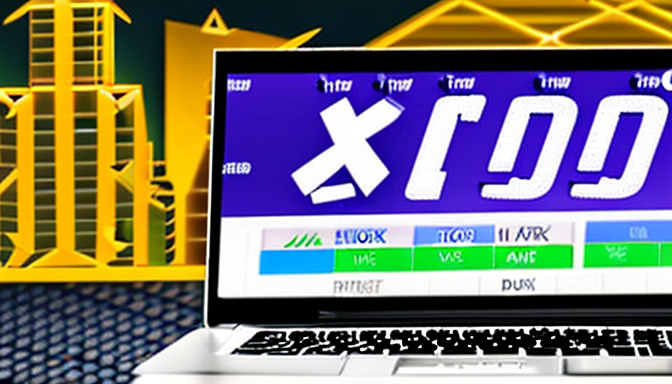The proliferation of cryptocurrency has led to an overwhelming reliance on centralized exchanges (CEXs) for trading and asset storage. While these platforms offer a user-friendly experience, they also expose users to a range of significant risks that can jeopardize their financial security. Understanding these risks is crucial for anyone looking to navigate the complex world of digital assets safely.
Centralized exchanges act as intermediaries, facilitating the buying and selling of cryptocurrencies. They manage user accounts, hold private keys, and provide liquidity, making them attractive for both novice and experienced traders. However, this model inherently places users’ funds at risk due to several factors, including security vulnerabilities, regulatory compliance issues, and custodial challenges.
Security Vulnerabilities
CEXs are prime targets for cybercriminals due to the substantial volumes of assets they manage. Notable incidents, such as the infamous Mt. Gox collapse in 2014, which resulted in the loss of approximately 850,000 Bitcoins, serve as stark reminders of the potential threats. Security breaches can arise from inadequate security protocols, making it imperative for users to understand the protective measures in place.
Regulatory and Compliance Issues
The regulatory environment governing centralized exchanges is complex and constantly evolving. Changes in regulations can impact the availability of certain cryptocurrencies and the operational framework of exchanges. Users must stay informed about these developments to avoid potential legal pitfalls and ensure their investments remain compliant with local laws.
Liquidity Risks
While centralized exchanges are often lauded for their high liquidity, they are not immune to market manipulation. Tactics such as wash trading and pump-and-dump schemes can distort market prices, leading to unexpected losses for unsuspecting traders. To mitigate these risks, diversifying trading strategies and utilizing multiple platforms can be beneficial.
Custodial Risks
One of the most significant risks associated with centralized exchanges is their custodial nature. By holding users’ private keys, these platforms limit individuals’ control over their assets. If an exchange is compromised or faces bankruptcy, users may lose access to their funds entirely. To combat this, users should consider managing their private keys through hardware wallets or exploring decentralized exchanges (DEXs) that allow for direct trading from personal wallets.
Insurance and Recovery Options
Some centralized exchanges provide insurance policies to protect users from losses due to hacks or operational failures. However, the effectiveness of these policies can vary widely. Users must carefully evaluate the terms and conditions of any insurance coverage and develop recovery strategies, such as diversifying holdings and utilizing secure storage options, to safeguard their assets.
Conclusion
In conclusion, while centralized exchanges offer convenience and accessibility, the associated risks cannot be overlooked. By understanding the security vulnerabilities, regulatory challenges, liquidity concerns, and custodial issues, users can make informed decisions to protect their investments in the dynamic world of cryptocurrency. Being proactive and educated is essential for navigating this evolving landscape safely.

Understanding Centralized Exchanges
Centralized exchanges (CEXs) play a pivotal role in the cryptocurrency ecosystem, acting as intermediaries that facilitate the buying and selling of digital assets. These platforms are designed to be user-friendly, often featuring intuitive interfaces that cater to both novice and experienced traders. However, the convenience they offer comes with a set of inherent risks that can significantly jeopardize users’ funds.
One of the primary concerns surrounding CEXs is their security vulnerabilities. Due to the substantial amount of cryptocurrency held on these platforms, they become prime targets for hackers. Notable incidents, such as the infamous Mt. Gox hack in 2014, resulted in the loss of approximately 850,000 Bitcoins, highlighting the catastrophic consequences of inadequate security measures. This breach not only affected individual users but also shook the entire cryptocurrency market, leading to increased scrutiny and calls for better security protocols.
Moreover, the custodial nature of CEXs means that users do not control their private keys. This reliance on a third party for asset management introduces additional risks. In the event of a security breach or operational failure, users may find themselves unable to access their funds. A study by the Blockchain Research Institute indicated that 94% of cryptocurrency holders are unaware of the implications of not managing their own private keys, which can lead to significant financial losses.
In addition to security and custodial risks, regulatory compliance presents another layer of complexity. CEXs operate within a constantly evolving legal framework that varies by jurisdiction. Regulatory changes can impact the availability of certain cryptocurrencies and the operational status of exchanges. For instance, a sudden regulatory crackdown can lead to the suspension of trading for specific assets, leaving users in a precarious position.
Liquidity risks also pose a challenge for traders on centralized exchanges. While these platforms typically offer high liquidity, they are not immune to market manipulation tactics such as wash trading and pump-and-dump schemes. These practices can artificially inflate prices, leading to sudden market corrections that can result in substantial losses for unsuspecting investors.
To mitigate these risks, users are encouraged to adopt several best practices:
- Diversify Trading Strategies: Utilize multiple exchanges to spread assets and reduce exposure to any single platform’s vulnerabilities.
- Use Hardware Wallets: Store the majority of assets in hardware wallets to maintain control over private keys and minimize custodial risks.
- Regularly Monitor Regulatory Changes: Stay informed about the legal landscape to anticipate potential impacts on trading activities.
- Assess Insurance Policies: If using a CEX, carefully evaluate the terms of any insurance policies offered to understand the extent of coverage.
In conclusion, while centralized exchanges offer a convenient means for trading cryptocurrencies, they come with significant risks that users must navigate. By understanding these risks and implementing proactive strategies, investors can better protect their assets in an increasingly complex digital landscape.

Security Vulnerabilities
in centralized exchanges (CEXs) are a critical concern for anyone involved in cryptocurrency. These platforms, designed to facilitate trading and storage, often become prime targets for cybercriminals due to their substantial asset pools. The consequences of inadequate security measures can be devastating, with users facing potential financial ruin.
One of the most notorious examples of a security breach in the cryptocurrency world is the Mt. Gox incident. Once the largest Bitcoin exchange, Mt. Gox collapsed in 2014 after hackers stole approximately 850,000 Bitcoins, valued at around $450 million at the time. This incident not only led to significant financial losses for users but also shattered trust in centralized exchanges. The fallout saw thousands of users left without access to their funds, highlighting the critical need for robust security measures in these platforms.
In addition to high-profile breaches, the inherent vulnerabilities of CEXs must also be considered. These exchanges typically hold users’ private keys, which means that the security of users’ funds is reliant on the exchange’s own security protocols. If an exchange is compromised, users may find themselves unable to recover their assets. This custodial model raises important questions about trust and the need for users to be proactive in managing their own security.
To illustrate the ongoing risks, consider the following statistics:
| Year | Exchange | Amount Lost | Method of Attack |
|---|---|---|---|
| 2014 | Mt. Gox | 850,000 BTC | Hacking |
| 2016 | Bitfinex | 120,000 BTC | Hacking |
| 2018 | Coincheck | 523 million NEM | Hacking |
The data above demonstrates a troubling trend: as more users flock to CEXs, the potential for significant breaches increases. Moreover, the evolution of hacking techniques means that exchanges must continually enhance their security protocols to keep pace with threats.
In light of these vulnerabilities, it is imperative for users to adopt a multi-faceted approach to security. This includes:
- Utilizing hardware wallets for long-term storage of cryptocurrencies.
- Enabling two-factor authentication on exchange accounts.
- Regularly monitoring account activity for suspicious transactions.
Ultimately, while centralized exchanges offer convenience, they also come with substantial risks. Users must remain vigilant and informed to safeguard their assets effectively in an ever-evolving digital landscape.
Case Study: The Mt. Gox Collapse
The collapse of Mt. Gox in 2014 serves as a pivotal case study in the realm of cryptocurrency exchanges, highlighting the inherent vulnerabilities associated with centralized platforms. Once the largest Bitcoin exchange globally, Mt. Gox’s failure resulted in the loss of approximately 850,000 Bitcoins, a staggering amount that underscored the necessity for robust security measures within the cryptocurrency ecosystem.
Following its establishment in 2010, Mt. Gox quickly gained prominence, processing over 70% of all Bitcoin transactions at its peak. However, its downfall was precipitated by a series of security breaches and mismanagement. In February 2014, the exchange announced that it had lost nearly half a billion dollars’ worth of Bitcoin due to a combination of hacking incidents and operational flaws. This incident not only devastated investors but also raised critical questions about the safety of centralized exchanges.
One of the primary lessons learned from the Mt. Gox collapse is the importance of security protocols. The exchange’s inadequate security infrastructure allowed hackers to exploit vulnerabilities, leading to the massive theft of funds. As a result, many users lost their investments permanently, highlighting the risks associated with entrusting digital assets to third-party platforms.
Research indicates that centralized exchanges are often prime targets for cybercriminals due to their large reserves of digital currencies. A 2019 study published in the Journal of Cybersecurity revealed that over 70% of cryptocurrency hacks targeted centralized exchanges, emphasizing the need for enhanced security measures. Following the Mt. Gox incident, many exchanges have since implemented two-factor authentication (2FA), cold storage solutions, and regular security audits to mitigate risks.
Furthermore, the regulatory landscape surrounding cryptocurrency exchanges has evolved considerably since the Mt. Gox debacle. Regulatory bodies worldwide have begun to impose stricter compliance requirements, including Know Your Customer (KYC) and Anti-Money Laundering (AML) policies, to protect users and enhance transparency in the industry.
In conclusion, the Mt. Gox collapse serves as a stark reminder of the risks associated with centralized exchanges. Users must remain vigilant and conduct thorough research before engaging with any trading platform. By understanding the potential vulnerabilities and advocating for stronger security measures, investors can better safeguard their assets in an increasingly digital financial landscape.
| Key Lessons from Mt. Gox | Implications for Users |
|---|---|
| Importance of Security Protocols | Choose exchanges with robust security measures. |
| Regulatory Compliance | Ensure the exchange adheres to local regulations. |
| Risk of Centralization | Consider decentralized alternatives for trading. |
Impact on Users
The collapse of Mt. Gox in 2014 serves as a stark reminder of the vulnerabilities associated with centralized exchanges (CEXs) in the cryptocurrency market. This incident not only resulted in the loss of approximately 850,000 Bitcoins but also left a significant number of users without access to their funds, highlighting the risks inherent in relying on these platforms for asset storage. The fallout from this event has had lasting implications for users and the broader cryptocurrency ecosystem.
After the Mt. Gox failure, many users reported feelings of frustration, anger, and betrayal. The inability to access their funds not only affected their financial well-being but also shook their confidence in digital currencies as a whole. A survey conducted by the International Journal of Financial Studies found that over 70% of former Mt. Gox users expressed concerns about the security of their assets on centralized exchanges, with many opting to move their holdings to more secure options such as hardware wallets or decentralized exchanges (DEXs).
Furthermore, the Mt. Gox incident catalyzed discussions about the need for regulatory oversight in the cryptocurrency space. Regulatory bodies began to scrutinize CEXs more closely, leading to the establishment of guidelines aimed at enhancing security measures and protecting users. For instance, the Financial Action Task Force (FATF) introduced recommendations for crypto exchanges to implement robust anti-money laundering (AML) and know your customer (KYC) protocols, striving to create a safer trading environment.
Despite these advancements, the risk of losing access to funds remains a significant concern for users. In addition to potential hacks, users may face operational failures or insolvency issues with exchanges, further complicating their financial security. A study published in the Journal of Risk and Financial Management indicated that nearly 30% of cryptocurrency investors have experienced issues with exchanges, ranging from withdrawal delays to complete shutdowns.
- Key Takeaways from the Mt. Gox Incident:
- Understand the risks associated with CEXs, including potential hacks and operational failures.
- Consider diversifying holdings across multiple platforms or utilizing hardware wallets for added security.
- Stay informed about regulatory changes that may impact the security of exchanges.
The Mt. Gox collapse serves as a cautionary tale, emphasizing the importance of vigilance and proactive measures when engaging in cryptocurrency trading. Users are encouraged to educate themselves on the security features of exchanges and consider alternative storage solutions to safeguard their investments. By taking these steps, they can mitigate the risks associated with centralized exchanges and protect their financial interests in an increasingly volatile market.
Lessons Learned
The Mt. Gox incident serves as a pivotal case in the evolving landscape of cryptocurrency exchanges, emphasizing the critical need for stringent security measures and regulatory frameworks. Following the collapse of Mt. Gox in 2014, where approximately 850,000 Bitcoins were lost, discussions surrounding the safety of digital assets intensified. This event not only affected individual investors but also raised alarms among regulators and industry stakeholders about the vulnerabilities inherent in centralized exchanges.
In the aftermath of the Mt. Gox incident, a series of forums and panels were convened to analyze the implications of this breach. Experts highlighted that the absence of robust security protocols and the reliance on third-party custodians significantly contributed to the disaster. Research indicates that exchanges with multi-signature wallets and cold storage solutions are less susceptible to hacking attempts, a lesson that many exchanges began to adopt post-Mt. Gox.
Moreover, the Mt. Gox failure ignited a debate on the necessity of regulatory oversight in the cryptocurrency space. Regulatory bodies across various jurisdictions began to formulate guidelines aimed at enhancing transparency and protecting users. For instance, the European Union’s Fifth Anti-Money Laundering Directive (5AMLD) was expanded to include cryptocurrency exchanges, mandating them to comply with anti-money laundering (AML) regulations. This shift reflects a growing recognition that without regulatory frameworks, users remain vulnerable to significant financial risks.
Additionally, the incident prompted exchanges to adopt insurance policies to safeguard user assets against potential breaches. However, the effectiveness of these policies varies widely, and users are encouraged to conduct thorough due diligence before entrusting their funds to any platform. A comparative analysis of insurance offerings reveals that while some exchanges provide comprehensive coverage, others may have limitations that could leave users exposed in the event of a hack.
In light of these developments, it is essential for users to remain informed about the security measures employed by the exchanges they choose. Implementing personal security practices, such as enabling two-factor authentication (2FA) and utilizing hardware wallets, can further mitigate risks. The Mt. Gox incident serves as a stark reminder that while centralized exchanges offer convenience, they also come with inherent risks that require vigilance from users.
In conclusion, the lessons learned from the Mt. Gox collapse underscore the importance of enhanced security protocols and regulatory oversight in the cryptocurrency industry. As the landscape continues to evolve, both users and exchanges must prioritize safety to protect digital assets effectively.
Regulatory and Compliance Issues
are paramount for centralized exchanges (CEXs) as they navigate a landscape marked by constant changes in legal frameworks and government policies. As these platforms facilitate the trading of various cryptocurrencies, they are often subject to regulations that can vary significantly across different jurisdictions. This regulatory environment poses compliance risks that can lead to operational challenges and impact the availability and legality of certain digital assets.
Centralized exchanges must adhere to a multitude of regulations, including anti-money laundering (AML) and know-your-customer (KYC) requirements. For instance, in the United States, the Financial Crimes Enforcement Network (FinCEN) mandates that CEXs implement robust AML protocols to prevent illicit activities. Failure to comply can result in severe penalties, including fines and potential shutdowns. A notable example occurred in 2020 when BitMEX, a popular exchange, faced legal action due to allegations of operating without the necessary licenses and failing to implement adequate KYC measures. This case highlights the importance of compliance in maintaining operational legitimacy.
Moreover, regulatory changes can significantly affect the types of cryptocurrencies that exchanges can list. For example, the European Union’s Markets in Crypto-Assets (MiCA) regulation aims to create a comprehensive regulatory framework for crypto assets. As this regulation evolves, exchanges may find themselves needing to delist certain tokens that do not meet the new standards. Such actions can lead to market instability and loss of user trust, as traders may suddenly find their assets unavailable for trading.
The dynamic nature of regulations also means that centralized exchanges must continuously monitor and adapt to new legal requirements. This can lead to operational strains, as resources are diverted to compliance efforts instead of enhancing user experience or security measures. A survey conducted by the Cambridge Centre for Alternative Finance revealed that 43% of cryptocurrency exchanges identified regulatory compliance as one of their top challenges, indicating the substantial burden that these requirements impose.
In addition to compliance risks, the potential for regulatory crackdowns can create a climate of uncertainty. Traders may hesitate to engage with exchanges that are under scrutiny or that have been recently penalized. This uncertainty can lead to decreased liquidity and trading volumes, ultimately affecting the overall health of the cryptocurrency market.
To mitigate these risks, CEXs are increasingly investing in legal and compliance teams to ensure adherence to regulations and to foster transparent relationships with regulatory bodies. By proactively addressing compliance issues, exchanges can not only safeguard their operations but also enhance their credibility in the eyes of users and investors.
In conclusion, the regulatory landscape for centralized exchanges is complex and ever-changing. Understanding the implications of these regulations is crucial for users and investors alike, as compliance risks can directly affect the availability and legality of cryptocurrencies. By staying informed and vigilant, stakeholders can navigate these challenges and make more informed decisions in the evolving world of digital assets.

Liquidity Risks
in centralized exchanges (CEXs) are a critical concern for traders and investors alike. While these platforms are known for their ability to facilitate high trading volumes and quick transactions, they also present a unique set of challenges that can lead to unexpected financial consequences.
One of the primary issues with liquidity on CEXs is the potential for market manipulation. This can manifest in various forms, including sudden price swings that can catch traders off guard. For instance, in a scenario where a large holder of a cryptocurrency decides to sell a significant portion of their assets, the market can experience a sharp decline in price. This sudden drop can result in substantial losses for unsuspecting traders who may have been holding the asset in anticipation of a price increase.
Research indicates that market manipulation tactics, such as wash trading and pump-and-dump schemes, are prevalent on many centralized exchanges. Wash trading involves a trader buying and selling the same asset simultaneously to create the illusion of high trading volume, which can mislead other investors into thinking there is genuine interest in the asset. On the other hand, pump-and-dump schemes involve artificially inflating the price of an asset through misleading information, only for the perpetrators to sell off their holdings at the inflated price, leaving other investors with significant losses.
To mitigate these liquidity risks, traders can adopt several strategies:
- Diversify trading strategies: Utilizing various approaches can help spread risk across different assets and trading methods.
- Use multiple exchanges: By not relying solely on one platform, traders can take advantage of varying liquidity conditions and reduce the impact of potential market manipulation.
- Set stop-loss orders: Implementing stop-loss orders can help limit losses during unexpected price swings.
Furthermore, the regulatory landscape surrounding CEXs is evolving, with authorities increasingly scrutinizing these platforms for compliance with trading regulations. This regulatory oversight can influence liquidity by affecting the availability of certain cryptocurrencies and the operations of exchanges. Traders should stay informed about these changes to make educated decisions regarding their trading activities.
In conclusion, while centralized exchanges offer the allure of high liquidity, they are not without their risks. Understanding the potential for market manipulation and adopting proactive strategies can empower traders to navigate this complex landscape more effectively. By remaining vigilant and informed, investors can better protect their assets and minimize the adverse effects of liquidity risks.
Market Manipulation Tactics
Market manipulation is a significant concern within the cryptocurrency landscape, particularly on centralized exchanges (CEXs). Tactics such as wash trading and pump-and-dump schemes have been identified as common methods that can severely distort market prices. These practices not only mislead investors but can also lead to substantial financial losses, especially for retail traders who may lack the resources to analyze market movements critically.
Wash trading involves the buying and selling of the same asset to create an illusion of increased trading volume. This tactic can mislead other investors into believing that there is heightened interest in a particular cryptocurrency, prompting them to buy in at inflated prices. Research indicates that wash trading can artificially inflate market capitalization, making an asset appear more valuable than it is. A study published in the *Journal of Financial Economics* found that approximately 70% of the trading volume on certain exchanges was attributed to wash trading activities, raising concerns about the reliability of such platforms.
In contrast, pump-and-dump schemes involve a coordinated effort to inflate the price of a cryptocurrency through misleading statements and hype, followed by the rapid sale of the asset at the peak price. This tactic exploits unsuspecting investors who are drawn in by the promise of quick profits. A notable case occurred in 2017 when a group manipulated the price of a lesser-known coin, leading to a 1,300% increase in value before the orchestrators sold off their holdings, resulting in massive losses for latecomers.
To illustrate the impact of these tactics, consider the following table that summarizes the consequences of market manipulation:
| Manipulation Tactic | Effect on Market | Impact on Retail Investors |
|---|---|---|
| Wash Trading | Inflated trading volume | Increased risk of buying at inflated prices |
| Pump-and-Dump | Artificial price spikes | Significant financial losses for late investors |
To mitigate the risks associated with market manipulation, investors should adopt a cautious approach. Here are some practical recommendations:
- Conduct thorough research on any cryptocurrency before investing.
- Monitor trading volumes and price movements over time to identify unusual patterns.
- Diversify investments across multiple assets to reduce exposure to market volatility.
- Utilize reputable exchanges that prioritize transparency and regulatory compliance.
In conclusion, understanding market manipulation tactics is crucial for navigating the complexities of cryptocurrency trading. By staying informed and vigilant, retail investors can better protect themselves from the detrimental effects of these deceptive practices, ultimately leading to more informed and secure investment decisions.
Mitigating Liquidity Risks
Liquidity risks in the cryptocurrency market can pose significant challenges for traders, particularly when relying on centralized exchanges (CEXs). These platforms, while offering high liquidity, can also be susceptible to sudden market fluctuations and manipulative practices that can lead to substantial financial losses. To navigate these challenges effectively, traders must employ a variety of strategies aimed at reducing their exposure to liquidity risks.
One effective method for mitigating liquidity risks is through diversification of trading strategies. By engaging in a range of trading practices—such as day trading, swing trading, and long-term investing—traders can spread their risk across different market conditions. For instance, a trader who primarily engages in day trading may find themselves at a disadvantage during periods of low volatility, whereas a swing trader may capitalize on longer price movements. This strategic diversification allows traders to adapt to changing market dynamics, ultimately enhancing their resilience against liquidity shocks.
Additionally, utilizing multiple exchanges is crucial in minimizing liquidity risks. By distributing assets across various platforms, traders can ensure that they are not overly reliant on a single exchange, which may be subject to operational failures or liquidity issues. For example, if one exchange experiences a sudden drop in liquidity due to market manipulation or technical difficulties, traders with assets spread across multiple exchanges can still access their funds and execute trades without significant disruption. This practice not only enhances liquidity but also provides a buffer against exchange-specific risks.
Furthermore, traders should consider implementing automated trading systems that can respond to market changes in real-time. These systems can execute trades based on predefined criteria, allowing for quick reactions to sudden price movements and reducing the emotional impact of trading decisions. Research has shown that algorithmic trading can improve market efficiency and reduce the likelihood of significant losses during volatile periods.
In addition to these strategies, it is essential for traders to remain informed about market trends and potential manipulative tactics that could affect liquidity. Understanding common practices, such as wash trading and pump-and-dump schemes, can help traders recognize and avoid scenarios that could lead to substantial losses. By staying vigilant and educated, traders can better navigate the complexities of the cryptocurrency market.
In conclusion, while liquidity risks are inherent in trading cryptocurrencies on centralized exchanges, traders can take proactive measures to mitigate these risks. By diversifying trading strategies, utilizing multiple exchanges, and employing automated trading systems, individuals can enhance their market resilience and protect their assets from unforeseen challenges. Ultimately, informed and strategic trading practices are key to successfully navigating the volatile landscape of cryptocurrency trading.

Custodial Risks
in the realm of cryptocurrency are a significant concern for investors. Centralized exchanges (CEXs) often act as custodians of users’ funds, holding private keys and managing assets on behalf of their clients. This custodial model can create a false sense of security, as users may believe their investments are safe simply because they are stored on an established platform. However, the reality is that this reliance on third-party security exposes users to various risks that can lead to substantial financial losses.
One of the primary risks associated with custodial arrangements is the potential for security breaches. High-profile hacks in recent years, such as the Binance hack in 2019, where over $40 million worth of Bitcoin was stolen, illustrate the vulnerabilities inherent in centralized systems. Users often have little recourse when funds are lost, as the exchange may not fully compensate them for their losses. This highlights the necessity for individuals to be aware of the security measures employed by their chosen exchange.
Moreover, the lack of control over private keys is a critical issue. When users store their cryptocurrencies on a CEX, they relinquish control of their private keys to the exchange. This means that if the exchange experiences operational failures or is subject to regulatory actions, users may find themselves unable to access their funds. A notable example is the case of QuadrigaCX, where the sudden death of the exchange’s founder led to the loss of access to $190 million worth of assets, leaving thousands of investors in limbo.
To mitigate these custodial risks, users can adopt several strategies:
- Utilize Hardware Wallets: Storing cryptocurrencies in hardware wallets allows users to maintain control over their private keys, significantly reducing the risk of theft.
- Conduct Thorough Research: Before choosing an exchange, users should investigate its security protocols, regulatory compliance, and track record regarding hacks and breaches.
- Diversify Holdings: Spreading assets across multiple exchanges and wallets can minimize the impact of a potential loss at any single platform.
In conclusion, while centralized exchanges provide convenience and accessibility for trading cryptocurrencies, the custodial risks they present cannot be overlooked. By understanding these risks and implementing proactive measures, users can better safeguard their digital assets and navigate the complex landscape of cryptocurrency trading with greater confidence.
Private Key Management
In the world of cryptocurrency, the management of private keys is a critical aspect that users must grasp to safeguard their investments. When individuals store their assets on centralized exchanges (CEXs), they often forfeit control over their private keys, which can lead to severe financial repercussions if those exchanges face security breaches or even bankruptcy.
Private keys are cryptographic keys that allow users to access and manage their cryptocurrency holdings. Unlike traditional banking systems, where institutions hold users’ funds and manage access, cryptocurrencies operate on a decentralized model. This means that the responsibility for managing private keys rests solely with the user. If a user loses their private key or if the exchange holding their keys is compromised, the funds can become irretrievable.
For instance, the infamous Mt. Gox incident in 2014 serves as a stark reminder of the risks involved. At its peak, Mt. Gox handled approximately 70% of all Bitcoin transactions worldwide. However, a security breach led to the loss of 850,000 Bitcoins, leaving thousands of users without access to their funds. This incident highlighted the importance of private key management and the potential consequences of relying solely on centralized platforms.
Moreover, a study conducted by the Blockchain Research Institute revealed that over 80% of cryptocurrency thefts occur from centralized exchanges. This statistic underscores the vulnerability of users who do not manage their own private keys. Instead of relying on exchanges, users are encouraged to utilize hardware wallets or cold storage solutions that allow them to retain full control over their private keys, significantly reducing the risk of loss.
To mitigate risks associated with private key management, users can adopt several strategies:
- Use Hardware Wallets: These devices store private keys offline, making them less susceptible to hacking.
- Implement Multi-Signature Wallets: These require multiple keys to authorize a transaction, providing an additional layer of security.
- Regular Backups: Users should maintain secure backups of their private keys in multiple locations to prevent loss.
In conclusion, the management of private keys is paramount for anyone engaging with cryptocurrencies. Understanding the implications of not managing these keys can lead to significant financial losses. By taking proactive steps to secure their private keys, users can protect their assets and navigate the cryptocurrency landscape with greater confidence.
Alternatives to CEXs
Decentralized exchanges (DEXs) represent a significant shift in the cryptocurrency trading landscape. Unlike centralized exchanges, which act as intermediaries, DEXs allow users to trade directly from their wallets. This fundamental difference not only enhances user autonomy but also significantly mitigates custodial risks associated with holding assets on centralized platforms.
One of the primary advantages of DEXs is the control over private keys. In a centralized exchange, users entrust their private keys to the platform, creating a single point of failure. In contrast, DEXs empower users to maintain ownership of their keys, ensuring that they have full control over their funds at all times. This is particularly crucial in an environment where security breaches are prevalent. For instance, a study by Chainalysis reported that centralized exchanges accounted for over 70% of cryptocurrency thefts in 2020, underscoring the risks involved in custodial models.
Moreover, DEXs enhance privacy and anonymity in trading activities. Many DEXs do not require users to undergo extensive Know Your Customer (KYC) procedures, allowing for a more private trading experience. This aspect is appealing to users who prioritize confidentiality and want to avoid the potential misuse of their personal information. A survey conducted by the Cambridge Centre for Alternative Finance found that 40% of cryptocurrency users prefer platforms that do not require KYC, highlighting a significant demand for privacy-focused solutions.
In addition to privacy, DEXs often provide greater access to a wider range of tokens. Centralized exchanges typically list only a select number of cryptocurrencies, often prioritizing those with higher market caps. In contrast, DEXs allow users to trade a broader array of tokens, including newly launched projects that may not yet be available on centralized platforms. This democratization of access can lead to increased opportunities for investors seeking to diversify their portfolios.
However, it is essential to recognize some challenges associated with DEXs. For instance, the liquidity on these platforms can be lower compared to centralized exchanges, potentially resulting in slippage during trades. Users must also be aware of the need for technical proficiency, as navigating DEXs can be more complex than using user-friendly CEX interfaces. Nonetheless, the growing adoption of DEXs and advancements in user experience design are addressing these concerns.
In conclusion, decentralized exchanges offer a compelling alternative to centralized platforms by allowing users to trade directly from their wallets, thus maintaining control over their private keys and reducing custodial risks. As the cryptocurrency landscape continues to evolve, understanding the benefits and challenges of DEXs is crucial for informed trading decisions.

Insurance and Recovery Options
for users of centralized exchanges (CEXs) have become increasingly relevant in the volatile landscape of cryptocurrency trading. As these platforms gain popularity, the risks associated with potential hacks or operational failures have prompted exchanges to introduce insurance policies aimed at safeguarding user assets. However, the reliability and scope of these policies can vary widely, necessitating a thorough understanding by users.
Insurance policies offered by centralized exchanges are designed to provide a safety net for users, compensating them in the event of a security breach or other operational failures. For instance, some exchanges may cover losses resulting from unauthorized access to user accounts or technical malfunctions. However, it is vital for users to scrutinize the terms of these policies, as coverage may not extend to all potential risks. For example, many policies may exclude losses incurred due to user negligence, such as falling victim to phishing attacks.
In a case study involving a prominent exchange, it was revealed that while the platform advertised insurance coverage, the specifics of the policy were vague. Users discovered that the coverage only applied to a fraction of the total losses incurred during a major hack, leaving many without adequate compensation. This incident highlights the importance of users conducting due diligence when assessing the insurance options provided by exchanges.
Moreover, recovery strategies are crucial for users to implement alongside any insurance coverage. Diversification of assets across multiple platforms can mitigate the risk of total loss. Utilizing hardware wallets for long-term storage of cryptocurrencies is another recommended practice, as it allows users to maintain control over their private keys and reduce reliance on third-party custodians.
- Evaluate the terms: Always read the fine print of insurance policies to understand what is covered.
- Diversify holdings: Spread assets across different exchanges to minimize exposure to any single point of failure.
- Use hardware wallets: Store the majority of your cryptocurrency in hardware wallets to enhance security.
In conclusion, while some centralized exchanges offer insurance policies to protect users from potential losses, the adequacy and reliability of these policies can vary significantly. Users must take proactive measures to safeguard their assets through careful evaluation of insurance terms and the implementation of robust recovery strategies. By doing so, they can navigate the complexities of cryptocurrency trading with greater confidence.
Evaluating Exchange Insurance Policies
When engaging with centralized exchanges (CEXs), it is essential for users to thoroughly evaluate the insurance policies that these platforms offer. While some exchanges provide insurance as a safeguard against losses due to hacks or operational failures, the specifics of these policies can vary widely. Understanding the limitations and conditions of such coverage is crucial for effective risk management.
Many exchanges claim to have insurance policies that protect users’ funds. However, the scope of coverage often does not extend to all types of losses. For instance, users may find that losses resulting from personal negligence, such as falling victim to phishing attacks, are not covered. Additionally, the fine print may reveal exclusions related to operational downtimes or system failures that are deemed beyond the exchange’s control.
A recent study conducted by the Blockchain Research Institute highlighted that only a fraction of exchanges with insurance policies provide adequate coverage for their users. The study revealed that approximately 30% of exchanges had policies that were either insufficient or lacked transparency. This raises critical questions about the reliability of such insurance in protecting users’ investments.
| Exchange | Insurance Coverage | Exclusions |
|---|---|---|
| Exchange A | $100 million | Phishing, Operational Downtime |
| Exchange B | $50 million | User Negligence, System Failures |
| Exchange C | $200 million | None Specified |
Furthermore, the credibility of the insurance provider is another critical factor to consider. Users should investigate whether the insurance is backed by reputable companies with a proven track record in the financial sector. A policy from a well-known insurer is more likely to provide reliable protection than one from an obscure or unverified source.
To mitigate risks associated with insurance policies, users should also adopt proactive measures. These may include:
- Conducting thorough research on the exchange’s security measures and insurance offerings.
- Diversifying assets across multiple platforms to minimize exposure to any single point of failure.
- Utilizing hardware wallets for long-term storage of cryptocurrencies, thus reducing reliance on exchanges.
In conclusion, while insurance policies offered by centralized exchanges may provide a layer of protection, users must approach them with caution. By understanding the limitations and conducting diligent research, users can better safeguard their investments in the volatile world of cryptocurrency.
Recovery Strategies
In the realm of cryptocurrency, the potential for loss due to security breaches necessitates the implementation of robust recovery strategies. Users must proactively safeguard their assets by employing various tactics that enhance their financial security. This becomes increasingly important given the rise in cyber threats targeting centralized exchanges.
One of the most effective strategies is diversifying holdings. By spreading assets across different cryptocurrencies and platforms, users can mitigate the risk of a total loss. For instance, instead of keeping all funds in a single centralized exchange, users can allocate portions of their investments to decentralized exchanges (DEXs) or even traditional investment vehicles. This approach not only reduces exposure to any single point of failure but also allows users to capitalize on various market opportunities.
Another critical recovery strategy involves the use of hardware wallets. Unlike centralized exchanges that store users’ private keys, hardware wallets allow individuals to maintain control over their keys offline. This significantly reduces the risk of hacking, as assets stored in hardware wallets are less susceptible to online threats. Users should consider investing in reputable hardware wallets, which provide an extra layer of security through encryption and physical access control.
In addition to diversifying and utilizing hardware wallets, users should also develop a comprehensive backup plan. This includes securely storing recovery phrases and private keys in multiple locations, such as encrypted USB drives or secure cloud storage. In case of a breach or loss of access to an exchange, having these backups ensures that users can recover their assets without significant hurdles.
Moreover, staying informed about the latest security practices is essential. Regularly updating software, utilizing two-factor authentication (2FA), and being cautious of phishing attempts can significantly enhance security. Users should follow reputable news sources and engage in community discussions to keep abreast of emerging threats and effective countermeasures.
Finally, it is vital for users to assess their risk tolerance and create a personalized security strategy that aligns with their investment goals. This may involve consulting with financial advisors or cybersecurity experts to tailor an approach that addresses individual circumstances and market conditions.
In conclusion, the potential for a security breach in the cryptocurrency space underscores the necessity of implementing sound recovery strategies. By diversifying holdings, utilizing hardware wallets, establishing robust backup plans, and staying informed about security practices, users can significantly enhance their asset protection. The proactive measures taken today can safeguard against the uncertainties of tomorrow’s digital landscape.

Conclusion: Making Informed Decisions
Making informed decisions in the rapidly evolving world of cryptocurrency is essential for safeguarding investments. As more users turn to centralized exchanges (CEXs) for trading and storing their digital assets, understanding the associated risks becomes paramount. Centralized exchanges provide convenience and accessibility, but they also expose users to various vulnerabilities that can lead to significant financial losses.
One of the primary concerns with CEXs is security vulnerabilities. These platforms are attractive targets for hackers due to the substantial amounts of cryptocurrency they hold. Historical incidents, such as the infamous Mt. Gox collapse in 2014, serve as stark reminders of the potential fallout. Mt. Gox, once the largest Bitcoin exchange, lost approximately 850,000 Bitcoins, highlighting the critical need for robust security measures.
In addition to security issues, users must also be aware of regulatory and compliance challenges. The legal landscape surrounding cryptocurrencies is constantly changing, which can impact the availability of certain assets on centralized platforms. For instance, a sudden regulatory shift could lead to the delisting of popular cryptocurrencies, leaving investors with diminished options.
Another significant risk is liquidity issues. While centralized exchanges generally offer high liquidity, they are not immune to market manipulation. Tactics such as wash trading and pump-and-dump schemes can create artificial price movements, resulting in unexpected losses for unsuspecting traders. To mitigate these risks, investors should consider diversifying their trading strategies and utilizing multiple exchanges to spread their assets.
Furthermore, the custodial nature of CEXs presents additional risks. Users typically do not have direct control over their private keys, which means they must trust the exchange to safeguard their assets. In the event of a security breach or operational failure, users could lose access to their funds. To address this, individuals should consider using hardware wallets or decentralized exchanges (DEXs) that allow for direct control over private keys.
Lastly, while some exchanges offer insurance policies to protect users against losses from hacks, the adequacy of these policies can vary significantly. Users should thoroughly evaluate the terms of any insurance coverage and consider implementing personal recovery strategies, such as diversifying holdings and investing in secure storage solutions.
In conclusion, understanding the risks associated with holding cryptocurrency on centralized exchanges is crucial for investors. By being informed and proactive, users can better protect their assets in an evolving digital landscape. Continuous education, vigilance, and strategic planning are essential components of a sound investment approach in the cryptocurrency market.
Frequently Asked Questions
- What are centralized exchanges (CEXs)?
Centralized exchanges are platforms where cryptocurrencies are traded through a third party. They provide user-friendly interfaces, making it easy for beginners to buy and sell crypto. However, they come with certain risks, such as security vulnerabilities and lack of control over your assets.
- What security risks are associated with CEXs?
CEXs are often targeted by hackers due to the large amounts of cryptocurrency they hold. High-profile hacks, like the Mt. Gox incident, have shown that inadequate security measures can lead to significant financial losses for users.
- How can I protect my assets on a centralized exchange?
To protect your assets, consider diversifying your holdings across multiple exchanges, using hardware wallets for long-term storage, and keeping up with the latest security practices. Always enable two-factor authentication and be cautious of phishing attempts.
- What should I know about liquidity risks?
While CEXs usually offer high liquidity, they can also be subject to market manipulation tactics, such as pump-and-dump schemes. These tactics can lead to sudden price swings that may result in unexpected losses for traders.
- Are there alternatives to centralized exchanges?
Yes! Decentralized exchanges (DEXs) allow users to trade directly from their wallets, which means you maintain control over your private keys and reduce the custodial risks associated with CEXs. This can be a safer option for many traders.
- Do centralized exchanges offer insurance for users?
Some CEXs do provide insurance policies to protect users against losses from hacks or operational failures. However, it’s crucial to carefully evaluate the terms and conditions of these policies, as coverage can vary significantly.














